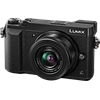Main
Model
Price
Advantages
launch
Announced
Body type
Camera subcategory
Sensor
Effective pixels
Max resolution
Sensor size
Sensor type
Processor
Image ratio w:h
Sensor photo detectors
Other resolutions
Image
ISO
Boosted ISO (minimum)
Boosted ISO (maximum)
White balance presets
Custom white balance
Image stabilization
Image stabilization notes
Uncompressed format
JPEG quality levels
Photography features
Minimum shutter speed
Maximum shutter speed
Maximum shutter speed (electronic)
Aperture priority
Shutter priority
Manual exposure mode
Subject / scene modes
Built-in flash
External flash
Flash modes
Continuous drive
Self-timer
Metering modes
Exposure compensation
AE Bracketing
WB Bracketing
Flash range
Screen / viewfinder
Articulated LCD
Screen size
Screen dots
Touch screen
Screen type
Live view
Viewfinder type
Viewfinder coverage
Viewfinder magnification
Viewfinder resolution
Videography features
File Format
Microphone
Speaker
Resolutions
Videography notes
Optics & Focus
Autofocus
Number of focus points
Lens mount
Focal length multiplier
Digital zoom
Manual focus
Physical
Weight (inc. batteries)
Dimensions
Environmentally sealed
Battery
Battery details
Battery Life (CIPA)
Storage
Storage types
Connectivity
USB
HDMI
Microphone port
Headphone port
Wireless
Wireless notes
Remote control
Other features
Orientation sensor
GPS
Timelapse recording
Samples
Videos
Summary
The Sony Alpha a9 highest resolution of 6000 x 4000 pixels (24 megapixels) is better than the Panasonic Lumix DMC-GX85 (Lumix DMC-GX80 / Lumix DMC-GX7 Mark II) maximum resolution of 4592 x 3448 pixels (16 megapixels). The Sony Alpha a9 has larger sensor compared to the Panasonic Lumix DMC-GX85 (Lumix DMC-GX80 / Lumix DMC-GX7 Mark II): Full frame (35.6 x 23.8 mm) versus Four Thirds (17.3 x 13 mm). This is the most important difference between these models because big sensor lets you to shoot pictures of the more professional quality. The Sony Alpha a9 offers a wider ISO range of 100-51200 in compare with 200-25600 ISO range of the Panasonic Lumix DMC-GX85 (Lumix DMC-GX80 / Lumix DMC-GX7 Mark II). Such ISO range allow the camera owner to shoot good quality pictures in more difficult situations. The Sony Alpha a9 has more presets of white balance - 10. This specification gives you more control over colour. The Sony Alpha a9 provides more number of focus points in compare with the Panasonic Lumix DMC-GX85 (Lumix DMC-GX80 / Lumix DMC-GX7 Mark II): 693 vs 49. More focus points means less risk of losing focus lock during following a moving object.
The Sony Alpha a9 screen is better as it offers more number of screen dots 1,440,000 in comparison to 1,040,000 dots of the Panasonic Lumix DMC-GX85 (Lumix DMC-GX80 / Lumix DMC-GX7 Mark II) display. The higher dot count screen is better for reviewing pictures on your camera. The Sony Alpha a9 has better lowest shutter speed - 60 seconds. The Sony Alpha a9 offers better highest shutter speed - 1/8000 second.
The Panasonic Lumix DMC-GX85 (Lumix DMC-GX80 / Lumix DMC-GX7 Mark II) is produced with built-in flash. The Sony Alpha a9 battery life is better than the Panasonic Lumix DMC-GX85 (Lumix DMC-GX80 / Lumix DMC-GX7 Mark II) battery life. According to CIPA standards the photographer will be able to make 650 shots with the Alpha a9 and only 290 with the Lumix DMC-GX85 (Lumix DMC-GX80 / Lumix DMC-GX7 Mark II). The Lumix DMC-GX85 (Lumix DMC-GX80 / Lumix DMC-GX7 Mark II) weighs 426g which is 247g less than the weight of the Sony Alpha a9.
The Sony Alpha a9 has 13 advantages and the Panasonic Lumix DMC-GX85 (Lumix DMC-GX80 / Lumix DMC-GX7 Mark II) only 4 so the Alpha a9 becomes the best choice. Check the lowest price on Amazon.


